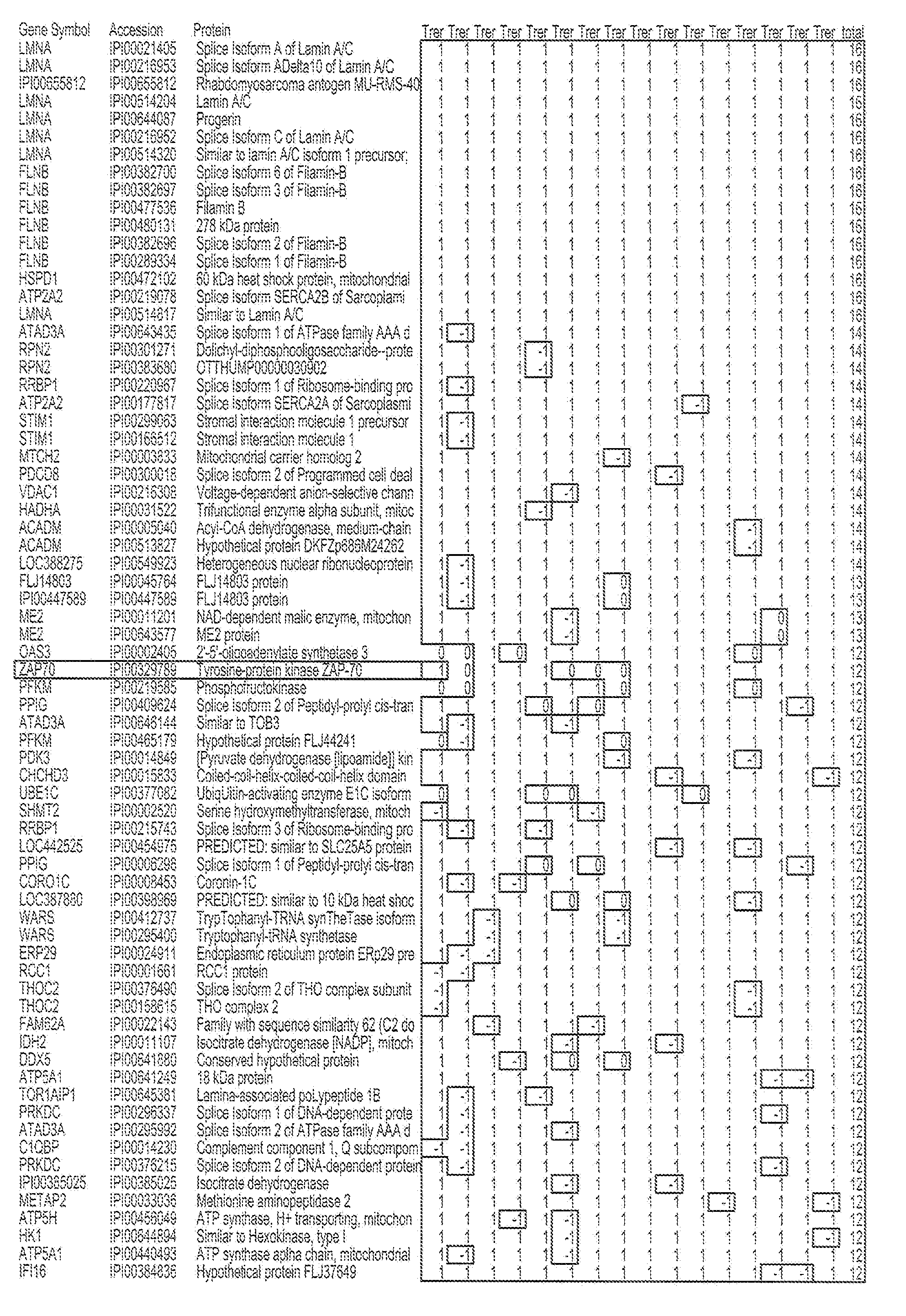Biomarkers for Diagnosis and Treatment of Chronic Lymphocytic Leukemia
a lymphocytic leukemia and biomarker technology, applied in the field of chronic lymphocytic leukemia biomarkers for diagnosis and treatment, can solve the problems of no definitive biomarker that can universally be used, and achieve the effect of improving the clinical outcome of the patien
- Summary
- Abstract
- Description
- Claims
- Application Information
AI Technical Summary
Benefits of technology
Problems solved by technology
Method used
Image
Examples
example i
Differential Expression of Biomarkers in Aggressive and Indolent CLL
[0050]Purified B cell samples from aggressive and indolent CLL patients were lysed and proteins were digested by trypsin. O16 / O18 labeling was used for relative quantitation by spectra count, while iTRAQ labeling was used to obtain more accurate quantitation. An automated 2D nanoflow LC system was coupled to an LTQ mass spectrometer to identify and quantify the peptides. Mass spectra were searched against the IPI™ database using Agilent Spectrum Mill™ software. Search results for individual spectra were automatically validated using filtering criteria from an in-situ False Discovery Rate (FDR) calculation. IDs for identified proteins were converted to gene symbols and Unigene IDs using the IPI gene cross reference table. Protein function analysis was done using the NCI DAVID™ website.
[0051]5 pairs of aggressive and indolent CLL samples were analyzed using O16 / O18 labeling. A total of 15,442 IPI protein sequences wer...
example ii
Prognostic Classification of CLL Patients Using Subnetwork Data
[0058]The clinical course of patients with chronic lymphocytic leukemia (CLL) is heterogeneous. For unknown reasons, some patients become fatal within few years while some others may stay symptom free for more than a decade. Several prognostic factors have been identified that can stratify patients into groups that differ in their relative tendency for disease progression and / or survival. Microarray studies have highlighted differences in mRNA levels found between such CLL subgroups.
[0059]To evaluate gene expression profiling to define a repertoires of transcriptional activity contributing to or resulting from the dynamic evolution of CLL cells. 131 CLL patients (of >90% CD19+CD5+ peripheral blood mononuclear cells in each sample) were profiled on mRNA expression microarrays using Affymetrix HG-U133 plus 2 GeneChips™ Patterns of gene activity correlated with the time intervals to treatment of CLL patients from the date o...
PUM
| Property | Measurement | Unit |
|---|---|---|
| Fraction | aaaaa | aaaaa |
| Fraction | aaaaa | aaaaa |
| Fraction | aaaaa | aaaaa |
Abstract
Description
Claims
Application Information
 Login to View More
Login to View More - R&D
- Intellectual Property
- Life Sciences
- Materials
- Tech Scout
- Unparalleled Data Quality
- Higher Quality Content
- 60% Fewer Hallucinations
Browse by: Latest US Patents, China's latest patents, Technical Efficacy Thesaurus, Application Domain, Technology Topic, Popular Technical Reports.
© 2025 PatSnap. All rights reserved.Legal|Privacy policy|Modern Slavery Act Transparency Statement|Sitemap|About US| Contact US: help@patsnap.com



